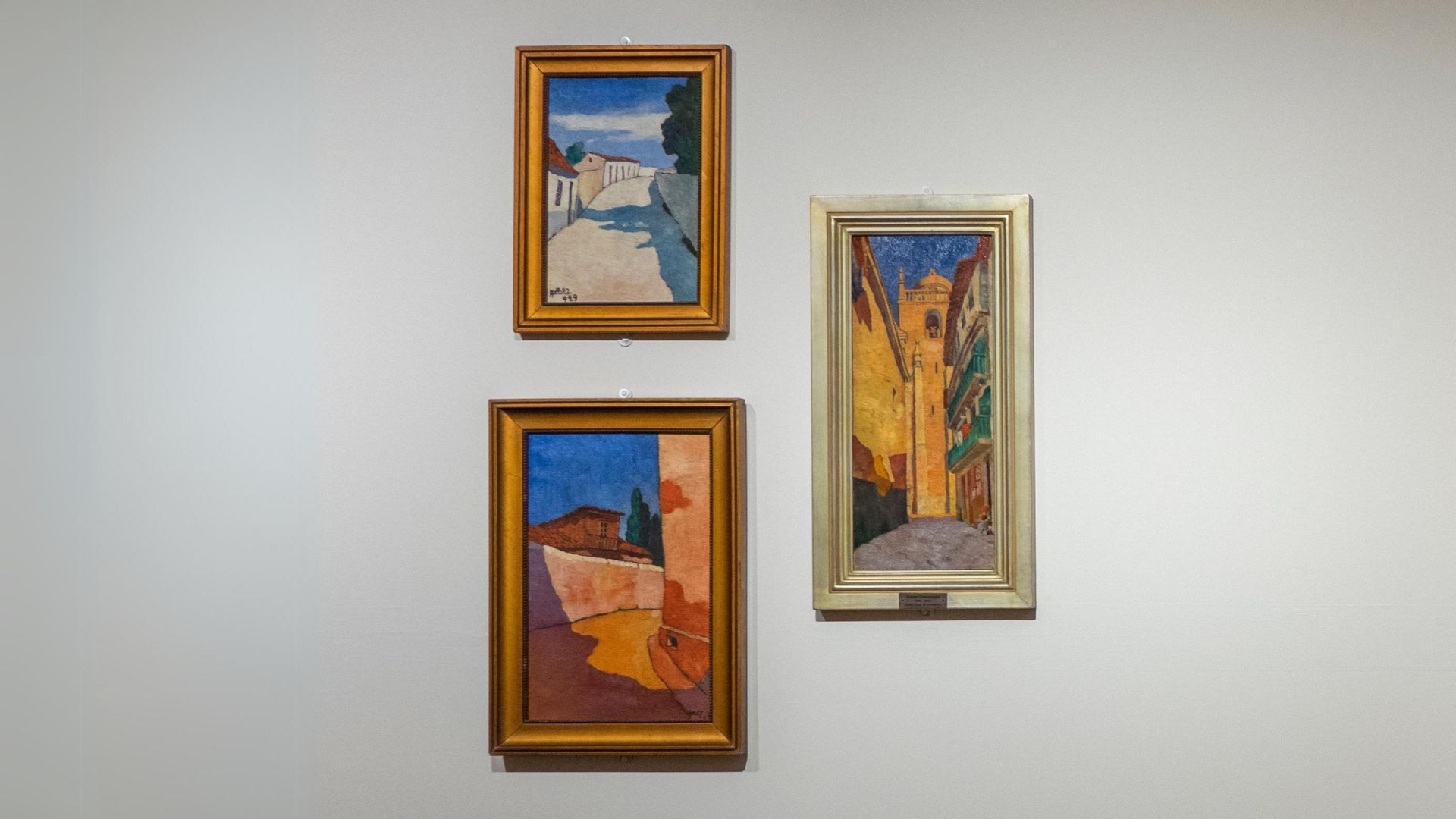The son of Galician parents, José Cândido Dominguez Alvarez was born in Porto on 23 February 1906.
At the age of 20, he enrolled in the Architecture course at Porto’s School of Fine Arts, then switched to Painting, where he was taught by Dórdio Gomes, Acácio Lino, Aarão de Lacerda and Joaquim Lopes. He only finished his academic training in 1940 with a mark of 20 out of 20 and for the next two years he was a scholarship holder at the Institute of High Culture and a teacher at the Infante D. Henrique School.
In the meantime, as one of the most committed protagonists, he was part of the group of artists from the Porto School of Fine Arts who, in 1929, launched the manifesto “+ Além”, against academic teaching, against the naturalistic values of Marques de Oliveira, against art as a mundane phenomenon, an event that would mark his entire life of marginalisation in relation to established values.
José Augusto França included him in the second wave of Portuguese modernism, along with Mário Eloy and Júlio Reis Pereira. There is a spontaneity in Dominguez Alvarez’s paintings that results in an apparently naive composition of shapes and colours.
Fernando Lanhas characterised the artist’s production in different phases. In the red phase, which began in 1927, Dominguez Alvarez used intense, understated colours, while at the same time depicting a primary, urban landscape, such as the painting Aspecto da Sé do Porto (View of Sé do Porto) and the “factories” series.
In another phase, after a few inconsequential forays into abstraction, while maintaining the same colour, he returned to landscaping, with more technical maturity, returning to Porto and northern landscapes such as S. João da Ribeira in Ponte de Lima.
In 1936, Dominguez Alvarez held his only solo exhibition at the Silva Porto Salon. Two years later, his artwork was rejected at the Third Exhibition of Modern Art organised by the National Propaganda Secretariat, but was then accepted for the following year’s exhibition.
In 1942, months after his death, the first retrospective exhibition of his work was held, once again at the Salão Silva Porto, organised, among others, by his father and the painters Guilherme Camarinha and Dórdio Gomes and under the aegis of the Instituto de Alta Cultura, in which around 300 of his works were exhibited, without selection or criteria, and which was repeated the following year in Lisbon, at the Sociedade Nacional de Belas Artes.
In the 1950s, various events brought his figure as a nonconformist and loner and the Alvarez Gallery was opened in honour of Jaime Isidoro and António Sampaio. In the 1980s, around the centenary of his birth, various events sought to position him in modern Portuguese art. For example, the magazine “Prelo”, published by the Imprensa Nacional Casa da Moeda, dedicated an issue to him and in 1987 the Secretary of State for Culture organised a retrospective exhibition of his work in Lisbon and Porto.
Photo: Paintings by José Dominguez Alvarez in the long-term exhibition at the Soares dos Reis National Museum
Cover photo: Self-portrait by José Dominguez Alvarez, oil on cardboard, undated @Fundação Calouste Gulbenkian

